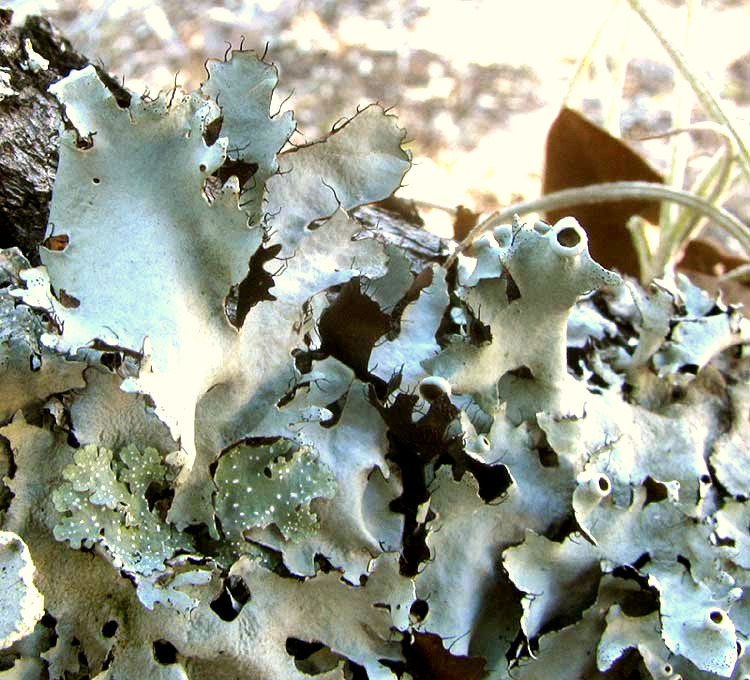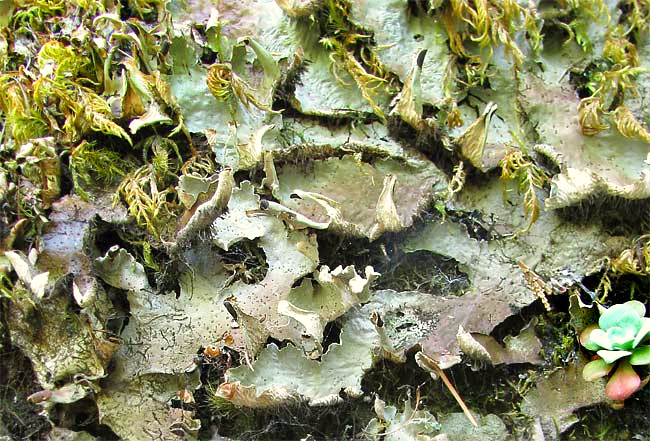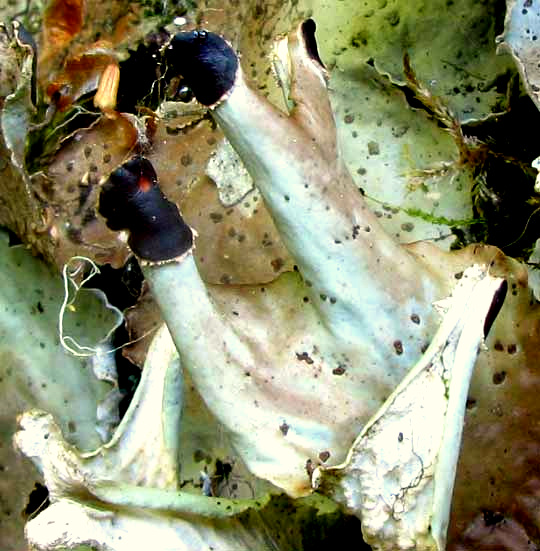
Foliose lichens such as the one shown on a tree trunk at the right take their name from being vaguely similar in appearance to "foliage," or leaves, in the manner of the Perforated Ruffle Lichen, Parmotrema perforatum, at the right. Note that its main, non-reproductive, body part, its thallus, is flat, like a leaf. Usually the thalli of fruticose lichens are somewhat slender and rounded, like stems in a bush ("fruticose means "bushy"), while thalli of crustose lichens may be flat, but their lower surfaces are attached to something, while these thalli are mostly unattached, like leaves lying on the ground.

The Ruffled Freckle Pelt Lichen, Peltigera leucophlebia, at the left also is foliose. Its thalli are similar in appearance to the earlier Perforated Ruffle Lichen, but notice that the spore-producing apothecia are very different between the two species. Apothecia on the earlier Perforated Ruffle form elevated craters on the thalli's surface, while the Ruffled Freckle Pelt's apothecia are like bottom-flattened fingers with blackened fingernails, arising from the thalli's margins.

At the right you can see two Ruffled Freckle Pelt apothecia. The "black fingernail" parts are brownish when young, but darken with age. This is one of those lichen species composed of three different kinds of organism, not just two. There's the fungus belonging to the family Peltigeraceae. The algal component belongs to the genus Coccomyxa, and then there's a cyanobacterium in the genus Nostoc.